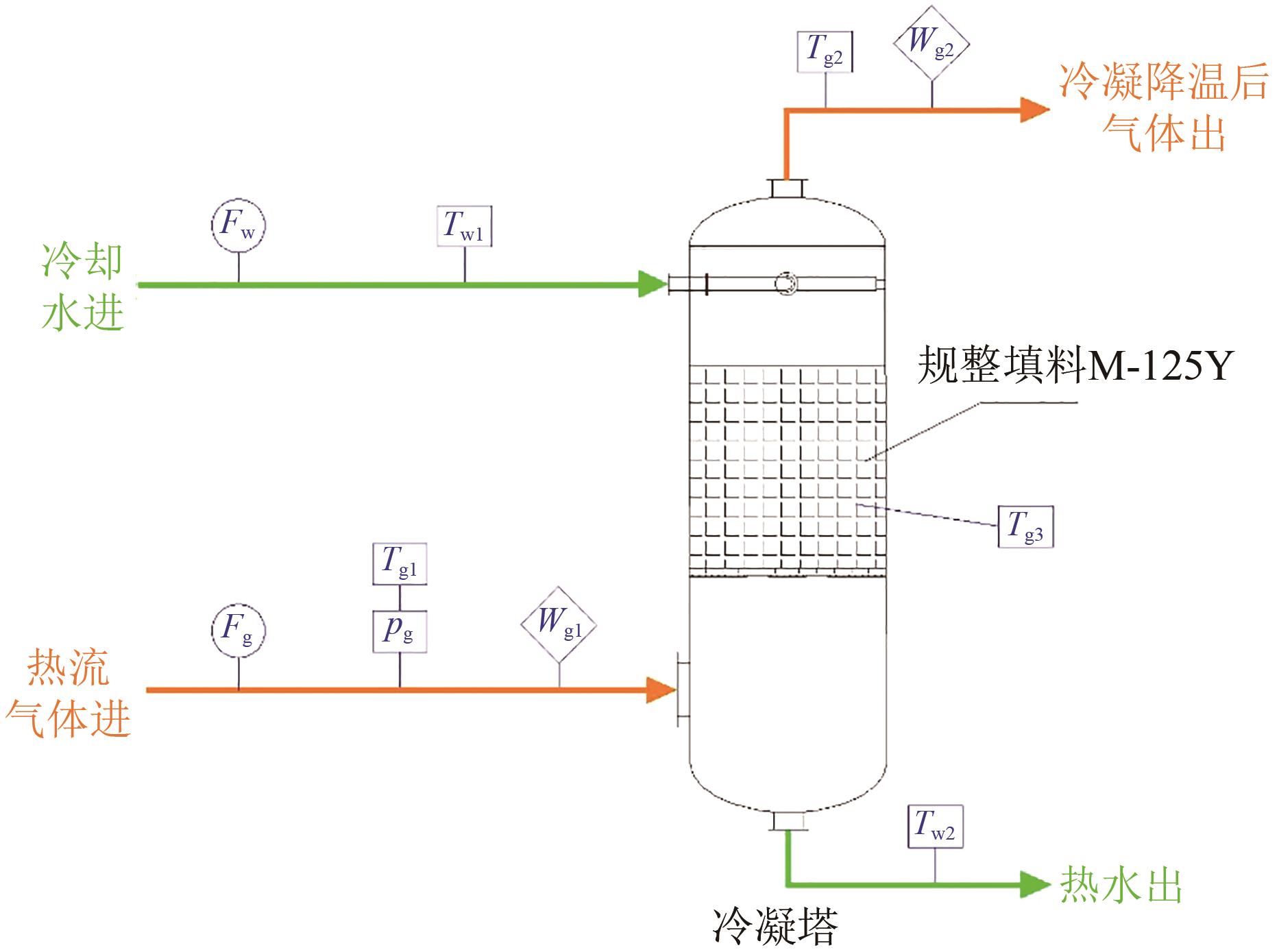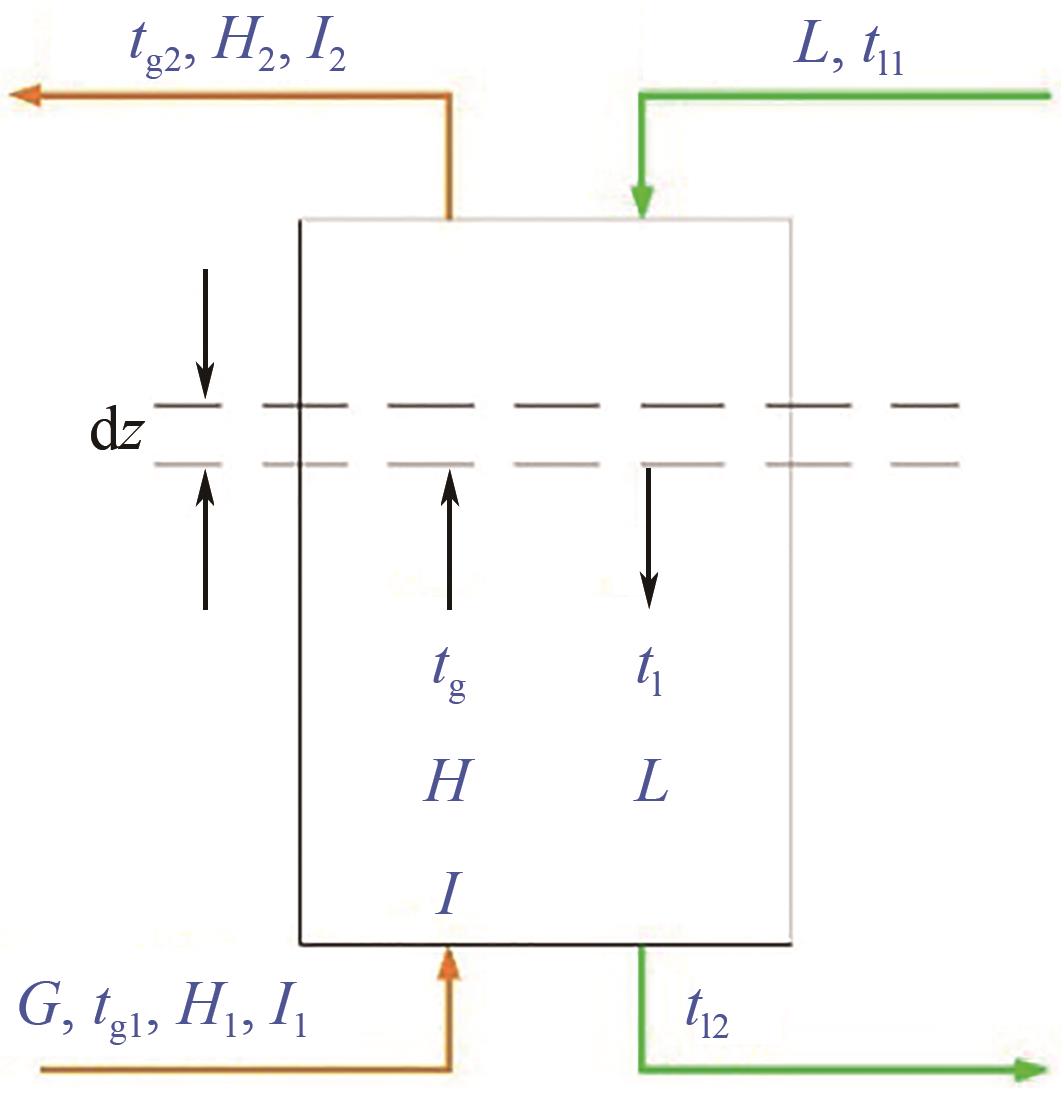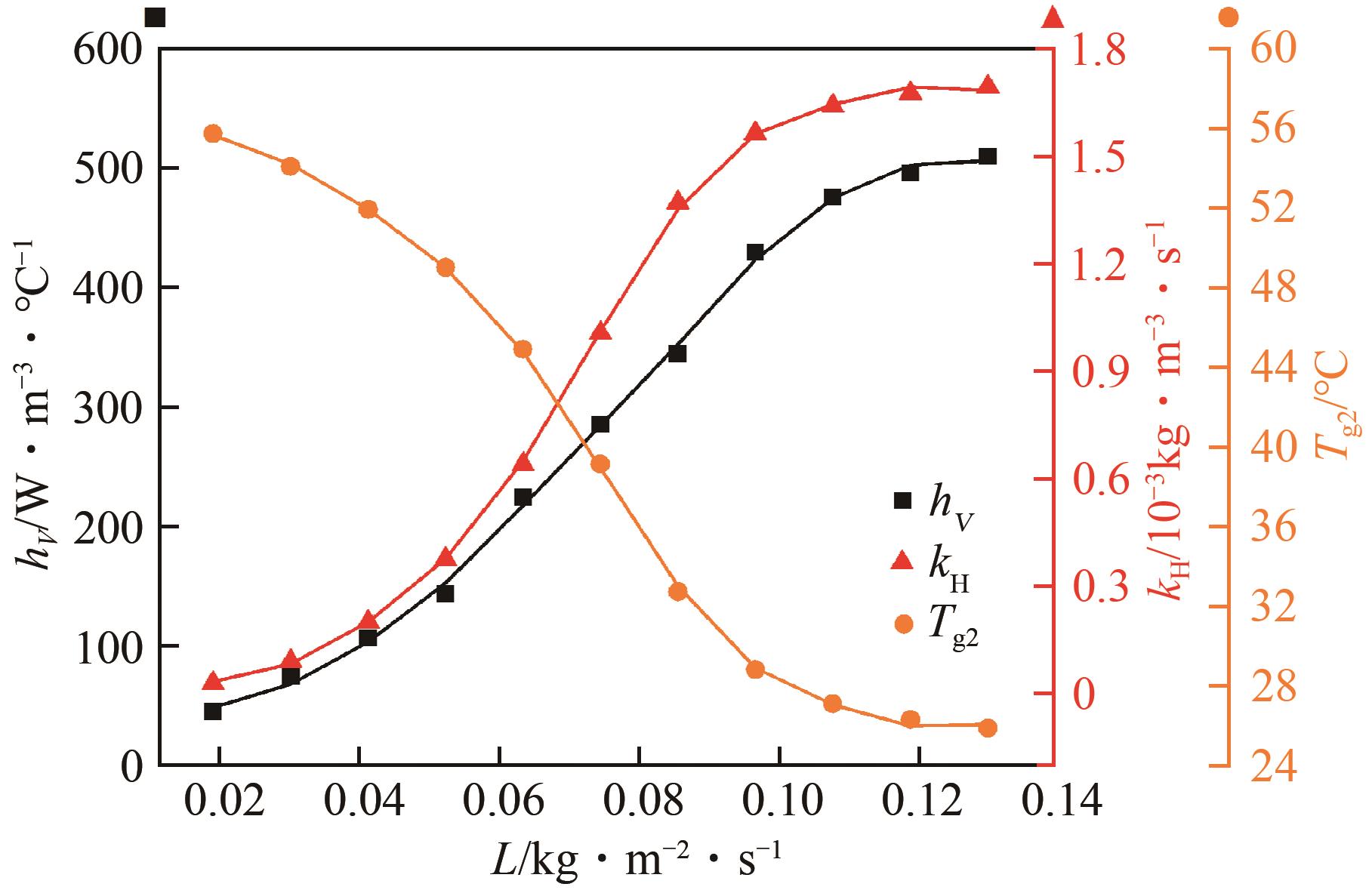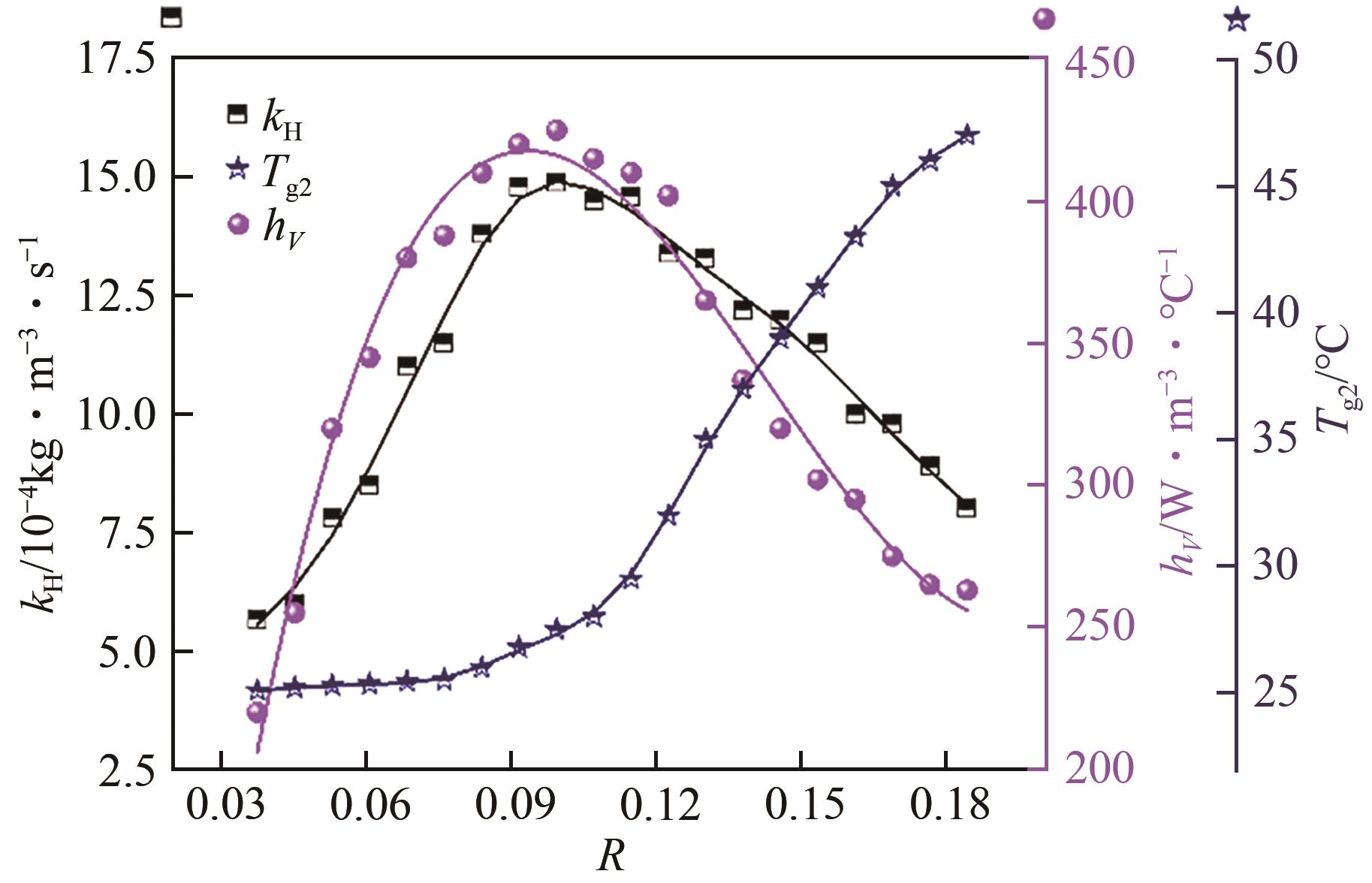Chemical Industry and Engineering Progress ›› 2022, Vol. 41 ›› Issue (9): 4618-4624.DOI: 10.16085/j.issn.1000-6613.2021-2380
• Chemical processes and equipment • Previous Articles Next Articles
Direct contact heat transfer process of vacuum exhaust system in wind tunnel
LI Wei( ), QI Dawei, YANG Jiongliang
), QI Dawei, YANG Jiongliang
- Chengdu Yizhi Technology Co. , Ltd. , Chengdu 610000, Sichuan, China
-
Received:2021-11-19Revised:2021-12-22Online:2022-09-27Published:2022-09-25 -
Contact:LI Wei
风洞真空排气系统直接接触传热过程
- 成都益志科技有限责任公司,四川 成都 610000
-
通讯作者:李伟 -
作者简介:李伟(1985—),男,硕士,工程师,主要从事化工工艺设计和风洞真空系统工程研发工作。E-mail: vioglo@126.com。
CLC Number:
Cite this article
LI Wei, QI Dawei, YANG Jiongliang. Direct contact heat transfer process of vacuum exhaust system in wind tunnel[J]. Chemical Industry and Engineering Progress, 2022, 41(9): 4618-4624.
李伟, 齐大伟, 杨炯良. 风洞真空排气系统直接接触传热过程[J]. 化工进展, 2022, 41(9): 4618-4624.
share this article
Add to citation manager EndNote|Ris|BibTeX
URL: https://hgjz.cip.com.cn/EN/10.16085/j.issn.1000-6613.2021-2380
| 序号 | 名称 | 安装位置 | 量程/规格 | 数量 | 品牌或型号 |
|---|---|---|---|---|---|
| 1 | 文丘里流量计 | 冷凝塔进气管路 | 0~100kg·s-1 | 1 | 罗斯蒙特 |
| 2 | 质量流量计 | 冷凝塔进水管路 | 0~1000kg·s-1 | 1 | 重庆川仪 |
| 3 | 压力变送器 | 热气进气口 | 0~100kPa(绝压) | 1 | 罗斯蒙特 |
| 4 | 温度计 | 冷凝塔进气口、出气口,冷凝塔进水口、出水口,填料位置 | Pt100热电阻 | 5 | 重庆川仪 |
| 5 | 气体水分分析仪 | 冷凝塔进气口、出气口 | 0~70% | 2 | 诺科仪器NK-300 |
| 6 | 测量采集系统 | PLC1500 | 1 | 西门子 |
| 序号 | 名称 | 安装位置 | 量程/规格 | 数量 | 品牌或型号 |
|---|---|---|---|---|---|
| 1 | 文丘里流量计 | 冷凝塔进气管路 | 0~100kg·s-1 | 1 | 罗斯蒙特 |
| 2 | 质量流量计 | 冷凝塔进水管路 | 0~1000kg·s-1 | 1 | 重庆川仪 |
| 3 | 压力变送器 | 热气进气口 | 0~100kPa(绝压) | 1 | 罗斯蒙特 |
| 4 | 温度计 | 冷凝塔进气口、出气口,冷凝塔进水口、出水口,填料位置 | Pt100热电阻 | 5 | 重庆川仪 |
| 5 | 气体水分分析仪 | 冷凝塔进气口、出气口 | 0~70% | 2 | 诺科仪器NK-300 |
| 6 | 测量采集系统 | PLC1500 | 1 | 西门子 |
| 参数 | 值 |
|---|---|
| 热流气体进冷凝塔 | |
| Fg/kg·s-1 | 18.88~92.26 |
| Tg1/℃ | 58.6~91.8 |
| Wg1/% | 25.4~61.35 |
| pg/kPa | 18~72 |
| 冷却水 | |
| Fw/kg·s-1 | 100~700 |
| L/kg·m-2·s-1 | 1.86×10-2~1.303×10-1 |
| Tw1/℃ | 25.0 |
| Tw2/℃ | 37.2~61.6 |
| 参数 | 值 |
|---|---|
| 热流气体进冷凝塔 | |
| Fg/kg·s-1 | 18.88~92.26 |
| Tg1/℃ | 58.6~91.8 |
| Wg1/% | 25.4~61.35 |
| pg/kPa | 18~72 |
| 冷却水 | |
| Fw/kg·s-1 | 100~700 |
| L/kg·m-2·s-1 | 1.86×10-2~1.303×10-1 |
| Tw1/℃ | 25.0 |
| Tw2/℃ | 37.2~61.6 |
| 气体体积分数/% | Fg/kg·s-1 | G/kg·m-2·s-1 | tg1/℃ | pg/kPa | cg/kJ·kg-1·K-1 | I/kJ·kg-1 | |||
|---|---|---|---|---|---|---|---|---|---|
| H2O | N2 | CO2 | O2 | ||||||
| 61.35 | 24.4 | 4.81 | 9.38 | 57.7 | 0.0107 | 68.3 | 29 | 1.42 | -7206 |
| 气体体积分数/% | Fg/kg·s-1 | G/kg·m-2·s-1 | tg1/℃ | pg/kPa | cg/kJ·kg-1·K-1 | I/kJ·kg-1 | |||
|---|---|---|---|---|---|---|---|---|---|
| H2O | N2 | CO2 | O2 | ||||||
| 61.35 | 24.4 | 4.81 | 9.38 | 57.7 | 0.0107 | 68.3 | 29 | 1.42 | -7206 |
| 工况 | pg /kPa | Wg /mg·g-1 |
|---|---|---|
| 1 | 18 | 142 |
| 2 | 24 | 109 |
| 3 | 30 | 85 |
| 4 | 36 | 73 |
| 5 | 42 | 58 |
| 6 | 48 | 50 |
| 7 | 54 | 45 |
| 8 | 60 | 39 |
| 9 | 66 | 37 |
| 10 | 72 | 34 |
| 工况 | pg /kPa | Wg /mg·g-1 |
|---|---|---|
| 1 | 18 | 142 |
| 2 | 24 | 109 |
| 3 | 30 | 85 |
| 4 | 36 | 73 |
| 5 | 42 | 58 |
| 6 | 48 | 50 |
| 7 | 54 | 45 |
| 8 | 60 | 39 |
| 9 | 66 | 37 |
| 10 | 72 | 34 |
| 工况 | L/kg·m-2·s-1 | hV /W·m-3·℃-1 | kH/kg·m-3·s-1 | Tg2/℃ |
|---|---|---|---|---|
| 1 | 1.86×10-2 | 45 | 3.08×10-5 | 55.7 |
| 2 | 2.98×10-2 | 74 | 9.27×10-5 | 54.0 |
| 3 | 4.09×10-2 | 106 | 2.02×10-4 | 51.9 |
| 4 | 5.21×10-2 | 144 | 3.77×10-4 | 49.0 |
| 5 | 6.33×10-2 | 225 | 6.42×10-4 | 44.9 |
| 6 | 7.44×10-2 | 286 | 1.01×10-3 | 39.1 |
| 7 | 8.56×10-2 | 345 | 1.37×10-3 | 32.7 |
| 8 | 9.68×10-2 | 430 | 1.57×10-3 | 28.8 |
| 9 | 1.079×10-1 | 476 | 1.64×10-3 | 27.1 |
| 10 | 1.191×10-1 | 496 | 1.68×10-3 | 26.3 |
| 11 | 1.303×10-1 | 510 | 1.70×10-3 | 25.9 |
| 工况 | L/kg·m-2·s-1 | hV /W·m-3·℃-1 | kH/kg·m-3·s-1 | Tg2/℃ |
|---|---|---|---|---|
| 1 | 1.86×10-2 | 45 | 3.08×10-5 | 55.7 |
| 2 | 2.98×10-2 | 74 | 9.27×10-5 | 54.0 |
| 3 | 4.09×10-2 | 106 | 2.02×10-4 | 51.9 |
| 4 | 5.21×10-2 | 144 | 3.77×10-4 | 49.0 |
| 5 | 6.33×10-2 | 225 | 6.42×10-4 | 44.9 |
| 6 | 7.44×10-2 | 286 | 1.01×10-3 | 39.1 |
| 7 | 8.56×10-2 | 345 | 1.37×10-3 | 32.7 |
| 8 | 9.68×10-2 | 430 | 1.57×10-3 | 28.8 |
| 9 | 1.079×10-1 | 476 | 1.64×10-3 | 27.1 |
| 10 | 1.191×10-1 | 496 | 1.68×10-3 | 26.3 |
| 11 | 1.303×10-1 | 510 | 1.70×10-3 | 25.9 |
| 工况 | R | hV /W·m-3·℃-1 | kH/kg·m-3·s-1 | Tg2/℃ | 工况 | R | hV /W·m-3·℃-1 | kH/kg·m-3·s-1 | Tg2/℃ |
|---|---|---|---|---|---|---|---|---|---|
| 1 | 0.038 | 220 | 5.67×10-4 | 25.1 | 11 | 0.115 | 410 | 1.46×10-3 | 29.5 |
| 2 | 0.046 | 255 | 6.00×10-4 | 25.2 | 12 | 0.123 | 402 | 1.34×10-3 | 32 |
| 3 | 0.053 | 320 | 7.80×10-4 | 25.3 | 13 | 0.130 | 365 | 1.33×10-3 | 35 |
| 4 | 0.061 | 345 | 8.50×10-4 | 25.35 | 14 | 0.138 | 337 | 1.22×10-3 | 37 |
| 5 | 0.069 | 380 | 1.10×10-3 | 25.45 | 15 | 0.146 | 320 | 1.20×10-3 | 39 |
| 6 | 0.077 | 388 | 1.15×10-3 | 25.5 | 16 | 0.153 | 302 | 1.15×10-3 | 41 |
| 7 | 0.084 | 410 | 1.38×10-3 | 26.0 | 17 | 0.161 | 295 | 1.00×10-3 | 43 |
| 8 | 0.092 | 420 | 1.48×10-3 | 26.8 | 18 | 0.169 | 275 | 9.80×10-4 | 45 |
| 9 | 0.010 | 425 | 1.49×10-3 | 27.5 | 19 | 0.176 | 265 | 8.90×10-4 | 46 |
| 10 | 0.107 | 415 | 1.45×10-3 | 28 | 20 | 0.184 | 263 | 8.00×10-4 | 47 |
| 工况 | R | hV /W·m-3·℃-1 | kH/kg·m-3·s-1 | Tg2/℃ | 工况 | R | hV /W·m-3·℃-1 | kH/kg·m-3·s-1 | Tg2/℃ |
|---|---|---|---|---|---|---|---|---|---|
| 1 | 0.038 | 220 | 5.67×10-4 | 25.1 | 11 | 0.115 | 410 | 1.46×10-3 | 29.5 |
| 2 | 0.046 | 255 | 6.00×10-4 | 25.2 | 12 | 0.123 | 402 | 1.34×10-3 | 32 |
| 3 | 0.053 | 320 | 7.80×10-4 | 25.3 | 13 | 0.130 | 365 | 1.33×10-3 | 35 |
| 4 | 0.061 | 345 | 8.50×10-4 | 25.35 | 14 | 0.138 | 337 | 1.22×10-3 | 37 |
| 5 | 0.069 | 380 | 1.10×10-3 | 25.45 | 15 | 0.146 | 320 | 1.20×10-3 | 39 |
| 6 | 0.077 | 388 | 1.15×10-3 | 25.5 | 16 | 0.153 | 302 | 1.15×10-3 | 41 |
| 7 | 0.084 | 410 | 1.38×10-3 | 26.0 | 17 | 0.161 | 295 | 1.00×10-3 | 43 |
| 8 | 0.092 | 420 | 1.48×10-3 | 26.8 | 18 | 0.169 | 275 | 9.80×10-4 | 45 |
| 9 | 0.010 | 425 | 1.49×10-3 | 27.5 | 19 | 0.176 | 265 | 8.90×10-4 | 46 |
| 10 | 0.107 | 415 | 1.45×10-3 | 28 | 20 | 0.184 | 263 | 8.00×10-4 | 47 |
| 1 | 齐大伟, 李伟华, 李传旭, 等. 大型风洞用离心真空泵气动设计[J]. 真空, 2021, 58(4): 49-53. |
| QI Dawei, LI Weihua, LI Chuanxu, et al. Pneumatic design of centrifugal vacuum pump for large wind tunnel[J]. Vacuum, 2021, 58(4): 49-53. | |
| 2 | 李彦良, 张喦, 曹知红, 等. 大温差高速燃气喷水冷却器喷嘴阵列设计[J]. 工程热物理学报, 2020, 41(5): 1102-1109. |
| LI Yanliang, ZHANG Yan, CAO Zhihong, et al. Design and simulation of the nozzle array for high temperature gas cooler[J]. Journal of Engineering Thermophysics, 2020, 41(5): 1102-1109. | |
| 3 | 蒲旭阳, 刘伟雄, 李向东, 等. 抽吸排气式高焓风洞应用实验研究[J]. 推进技术, 2018, 39(2): 450-455. |
| PU Xuyang, LIU Weixiong, LI Xiangdong, et al. Applied experimental study of exhaust high enthalpy tunnel with pumping[J]. Journal of Propulsion Technology, 2018, 39(2): 450-455. | |
| 4 | 郭达, 祁贵生, 刘有智, 等. 错流旋转填料床的质、热同传性能及传热机理研究[J]. 化工学报, 2021, 72(11): 5543-5551. |
| GUO Da, QI Guisheng, LIU Youzhi, et al. Research on mass and heat synchronous performance and heat transfer mechanism of cross-flow rotating packed bed[J]. CIESC Journal, 2021, 72(11): 5543-5551. | |
| 5 | 付海玲, 王一平. 直接接触汽化传热实验装置的设计与测试技术[J]. 化学工程, 2017, 45(12): 30-34. |
| FU Hailing, WANG Yiping. Design and test technology of direct contact evaporation heat transfer experimental installation[J]. Chemical Engineering, 2017, 45(12): 30-34. | |
| 6 | 李晗, 蒲文灏, 杨宁, 等. 空气-石蜡直接接触换热特性实验研究[J]. 化工学报, 2018, 69(9): 3792-3798. |
| LI Han, PU Wenhao, YANG Ning, et al. Experimental study on air-paraffin direct contact heat transfer characteristics[J]. CIESC Journal, 2018, 69(9): 3792-3798. | |
| 7 | 胡保亭. 空气-水直接接触高效传热过程及设备研究[D]. 青岛: 中国海洋大学, 2004. |
| HU Baoting. Study on high efficient air-water direct contact heat transfer process and equipment[D]. Qingdao: Ocean University of China, 2004. | |
| 8 | 章学来, 卢家才, 李瑞阳, 等. 直接接触式换热技术的研究进展[J]. 能源技术, 2001, 22(1): 2-6. |
| ZHANG Xuelai, LU Jiacai, LI Ruiyang, et al. There search advancement of direct contact heat transfer technology[J]. Energy Technology, 2001, 22(1): 2-6. | |
| 9 | 王一平, 李彦博, 张金利. 直接接触式环流换热器传热研究[J]. 化学工程, 2000, 28(4): 18-21, 31. |
| WANG Y P, LI Y B, ZHANG J L. Research on heat transfer about direct contact recycling exchanger[J]. Chemical Engineering, 2000, 28(4): 18-21, 31. | |
| 10 | WAGNER W, KRUSE A. Properties of water and steam: the industrial standard IAPWS-IF97 for the thermodynamic properties and supplementary equations for other properties: tables based on these equation[M]. Berlin: Springer-Verlag, 1998. |
| 11 | WALKERW H, LEWISW K, MCADAMSW H. Principles of chemical engineering[M]. NewYork: McGraw-Hill, 1923. |
| 12 | FISENKOS P, PETRUCHIKA I, SOLODUKHINA D. Evaporative cooling of water in a natural draft cooling tower[J]. International Journal of Heat and Mass Transfer, 2002, 45(23): 4683-4694. |
| 13 | 魏世超, 黄群武, 蒋丽红, 等. 采用填料强化的鼓泡塔直接接触换热性能研究[J]. 化学工业与工程, 2017, 34(1): 84-89. |
| WEI Shichao, HUANG Qunwu, JIANG Lihong, etal. Direct contact heat transfer performance in spray column with packing[J]. Chemical Industry and Engineering, 2017, 34(1): 84-89. | |
| 14 | LI Yi, KLAUSNER J F, MEI R W, et al. Direct contact condensation in packed beds[J]. International Journal of Heat and Mass Transfer, 2006, 49(25/26): 4751-4761. |
| 15 | SPIEGEL L, BOMIO P, HUNKELER R. Direct heat and mass transfer instructured packings[J]. Chemical Engineering and Processing: Process Intensification, 1996, 35(6): 479-485. |
| 16 | 倪春丽, 王一平, 黄群武. 新型规整填料换热器传热的理论与实验研究[J]. 化学工程, 2018(1): 31-36. |
| NI Chunli, WANG Yiping, HUANG Qunwu. The oretical and experimental study on heat transfer performance of novel structured packing heat exchanger[J]. Chemical Engineering, 2018(1): 31-36. | |
| 17 | HEYNSJ A, KRÖGERD G. Experimental investigation into the thermal-flow performance characteristics of an evaporative cooler[J]. Applied Thermal Engineering, 2010, 30(5): 492-498. |
| 18 | 刘少卿. 规整填料内直接接触冷凝传热实验研究[D]. 天津: 天津大学, 2013. |
| LIU Shaoqing. Experimental study of direct contact condensation instructured packing[D]. Tianjin: Tianjin University, 2013. | |
| 19 | HASANA L, SIRÉN K. The oretical and computational analysis of closed wet cooling towers and its applications in cooling of buildings[J]. Energy and Buildings, 2002, 34(5): 477-486. |
| 20 | 郭强, 祁贵生, 刘有智, 等. 不同规整填料旋转床的传质性能对比[J]. 化工进展, 2016, 35(3): 741-747. |
| GUO Qiang, QI Guisheng, LIU Youzhi, et al. Comparative study of mass transfer performance of different structured packings in rotating packed bed[J]. Chemical Industry and Engineering Progress, 2016, 35(3): 741-747. |
| [1] | XIAO Hui, ZHANG Xianjun, LAN Zhike, WANG Suhao, WANG Sheng. Advances in flow and heat transfer research of liquid metal flowing across tube bundles [J]. Chemical Industry and Engineering Progress, 2023, 42(S1): 10-20. |
| [2] | SHENG Weiwu, CHENG Yongpan, CHEN Qiang, LI Xiaoting, WEI Jia, LI Linge, CHEN Xianfeng. Operating condition analysis of the microbubble and microdroplet dual-enhanced desulfurization reactor [J]. Chemical Industry and Engineering Progress, 2023, 42(S1): 142-147. |
| [3] | ZHAO Chen, MIAO Tianze, ZHANG Chaoyang, HONG Fangjun, WANG Dahai. Heat transfer characteristics of ethylene glycol aqueous solution in slit channel under negative pressure [J]. Chemical Industry and Engineering Progress, 2023, 42(S1): 148-157. |
| [4] | HUANG Yiping, LI Ting, ZHENG Longyun, QI Ao, CHEN Zhenglin, SHI Tianhao, ZHANG Xinyu, GUO Kai, HU Meng, NI Zeyu, LIU Hui, XIA Miao, ZHU Kai, LIU Chunjiang. Hydrodynamics and mass transfer characteristics of a three-stage internal loop airlift reactor [J]. Chemical Industry and Engineering Progress, 2023, 42(S1): 175-188. |
| [5] | YANG Hanyue, KONG Lingzhen, CHEN Jiaqing, SUN Huan, SONG Jiakai, WANG Sicheng, KONG Biao. Decarbonization performance of downflow tubular gas-liquid contactor of microbubble-type [J]. Chemical Industry and Engineering Progress, 2023, 42(S1): 197-204. |
| [6] | CHEN Kuangyin, LI Ruilan, TONG Yang, SHEN Jianhua. Structure design of gas diffusion layer in proton exchange membrane fuel cell [J]. Chemical Industry and Engineering Progress, 2023, 42(S1): 246-259. |
| [7] | SHAO Boshi, TAN Hongbo. Simulation on the enhancement of cryogenic removal of volatile organic compounds by sawtooth plate [J]. Chemical Industry and Engineering Progress, 2023, 42(S1): 84-93. |
| [8] | CHEN Lin, XU Peiyuan, ZHANG Xiaohui, CHEN Jie, XU Zhenjun, CHEN Jiaxiang, MI Xiaoguang, FENG Yongchang, MEI Deqing. Investigation on the LNG mixed refrigerant flow and heat transfer characteristics in coil-wounded heat exchanger (CWHE) system [J]. Chemical Industry and Engineering Progress, 2023, 42(9): 4496-4503. |
| [9] | ZHANG Fan, TAO Shaohui, CHEN Yushi, XIANG Shuguang. Initializing distillation column simulation based on the improved constant heat transport model [J]. Chemical Industry and Engineering Progress, 2023, 42(9): 4550-4558. |
| [10] | BU Zhicheng, JIAO Bo, LIN Haihua, SUN Hongyuan. Review on computational fluid dynamics (CFD) simulation and advances in pulsating heat pipes [J]. Chemical Industry and Engineering Progress, 2023, 42(8): 4167-4181. |
| [11] | WANG Jiansheng, ZHANG Huipeng, LIU Xueling, FU Yuguo, ZHU Jianxiao. Analysis of flow and heat transfer characteristics in porous media reservoir [J]. Chemical Industry and Engineering Progress, 2023, 42(8): 4212-4220. |
| [12] | WANG Yungang, JIAO Jian, DENG Shifeng, ZHAO Qinxin, SHAO Huaishuang. Experimental analysis of condensation heat transfer and synergistic desulfurization [J]. Chemical Industry and Engineering Progress, 2023, 42(8): 4230-4237. |
| [13] | LI Dong, WANG Qianqian, ZHANG Liang, LI Jun, FU Qian, ZHU Xun, LIAO Qiang. Performance of series stack of non-aqueous nano slurry thermally regenerative flow batteries [J]. Chemical Industry and Engineering Progress, 2023, 42(8): 4238-4246. |
| [14] | CHU Tiantian, LIU Runzhu, DU Gaohua, MA Jiahao, ZHANG Xiao’a, WANG Chengzhong, ZHANG Junying. Preparation and chemical degradability of organoguanidine-catalyzed dehydrogenation type RTV silicone rubbers [J]. Chemical Industry and Engineering Progress, 2023, 42(7): 3664-3673. |
| [15] | LI Ruidong, HUANG Hui, TONG Guohu, WANG Yueshe. Hygroscopic properties and corrosion behavior of ammonium salt in a crude oil distillation column [J]. Chemical Industry and Engineering Progress, 2023, 42(6): 2809-2818. |
| Viewed | ||||||
|
Full text |
|
|||||
|
Abstract |
|
|||||




